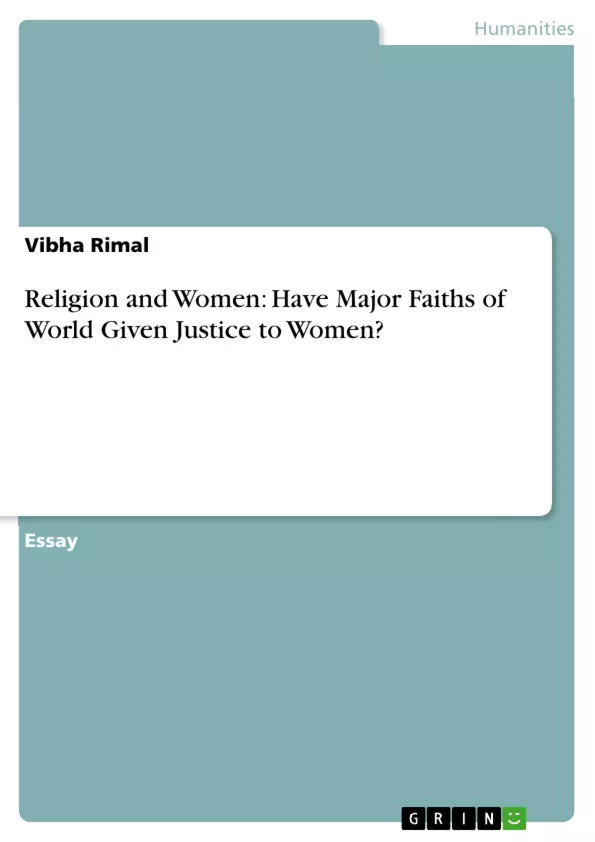A known fact is that religion governs people's behavior. Religion is an intrinsic part of human civilization. Religion and human behavior are like CPU and monitor of a computer, respectively. Human brain evolved to become a belief engine in the hand of religion. Religion defined the ideas for life, which in turn are reflected in the societies and individuals. So why not peep into women's position in religious background?
Inhaltsverzeichnis (Table of Contents)
- Religion and Women
- Hinduism
- Buddhism
- Mahayana Tradition
- Theravada Tradition
- Christianity
- Islam
- Conclusion
Zielsetzung und Themenschwerpunkte (Objectives and Key Themes)
This text critically examines the portrayal and treatment of women within major world religions. It explores how religious doctrines, practices, and interpretations have historically contributed to gender inequality and the subordination of women.- The impact of patriarchal structures on religious interpretations and practices.
- The role of religious texts and teachings in shaping societal views of women.
- The prevalence of gender discrimination and violence against women in various religious contexts.
- The need for reform and a re-examination of religious doctrines to achieve gender equality.
- The significance of women's voices and experiences in shaping religious discourse and practice.
Zusammenfassung der Kapitel (Chapter Summaries)
- Religion and Women: This introductory chapter establishes the premise of the text by highlighting the pervasive influence of religion on societal norms and behavior. It underscores the need to investigate the representation of women within religious frameworks.
- Hinduism: This section delves into the portrayal of women in Hinduism, drawing on ancient texts like the Ramayana and the Laws of Manu. It highlights how these texts perpetuate a hierarchical system that positions women as subordinate to men.
- Buddhism: The chapter explores the treatment of women within Buddhism, focusing on both the Mahayana and Theravada traditions. It examines how Buddhist teachings, including those attributed to Buddha himself, can be interpreted as discriminatory and limiting for women.
- Christianity: This section analyzes the historical and theological contexts that have shaped Christian views of women. It examines how the institution of Christianity, characterized by patriarchal leadership, has contributed to the marginalization of women.
- Islam: The chapter investigates the role of Islam in shaping the lives of Muslim women, focusing on the impact of Islamic culture, tradition, and religious laws. It explores the complexities of gender roles and expectations within the Islamic faith.
Schlüsselwörter (Keywords)
This text explores themes of religion, gender, inequality, patriarchy, religious texts, interpretation, discrimination, violence against women, and the need for reform. It examines the influence of major world religions, such as Hinduism, Buddhism, Christianity, and Islam, on the treatment of women within societies. Central to the discussion are the roles of religious teachings, cultural norms, and historical contexts in shaping perspectives on gender roles and power dynamics.
Excerpt out of 4 pages
- scroll top
- Quote paper
- Vibha Rimal (Author), 2014, Religion and Women: Have Major Faiths of World Given Justice to Women?, Munich, GRIN Verlag, https://www.grin.com/document/284788
Look inside the ebook



